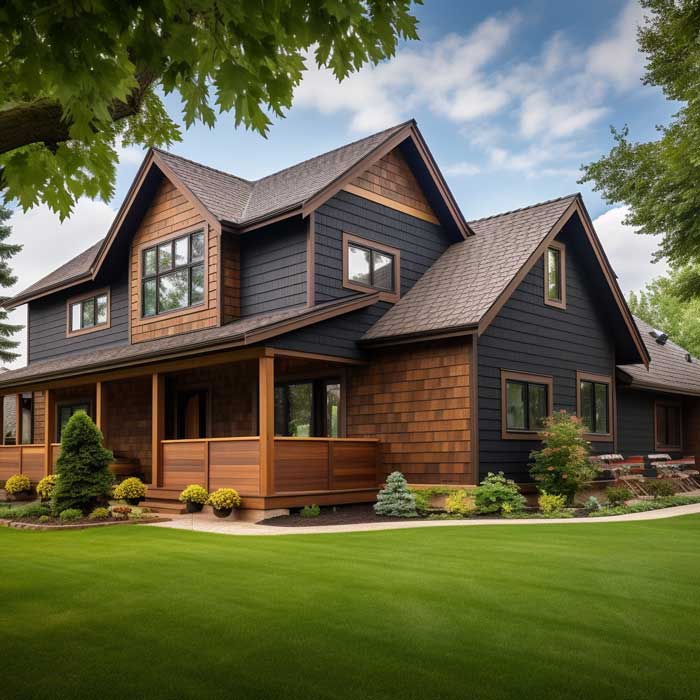Fiber Cement Siding: The Blend of Strength and Style for Exceptional Homes
With its remarkable strength, fire resistance, and a vast array of design possibilities, fiber cement siding has solidified its position as a preferred choice for residential exteriors across the United States. Able to replicate the look of wood while offering enhanced durability, fiber cement siding is a combination of style and substance that enhances homes with its enduring appeal and protective qualities.
Description and Composition
Fiber cement siding is a composite material made primarily from cement, sand, and cellulose fibers. This unique composition combines the durability of cement with the flexibility and workability of wood fibers. The result is a material that boasts exceptional strength and resilience, capable of withstanding the harshest of weather conditions.
Styles and Profiles Available
Fiber cement siding is celebrated for its ability to mimic the appearance of traditional wood siding while offering enhanced durability. Homeowners can choose from various styles, including lap siding, shingle-style siding, and vertical siding, among others. Additionally, the texture of fiber cement siding can replicate the look of wood grain, providing an authentic and inviting appearance.
Durability and Maintenance Considerations
One of the standout features of fiber cement siding is its exceptional durability and weather resistance. It can withstand heavy rain, extreme temperatures, and high winds without succumbing to damage or deterioration. Its resistance to moisture and pests ensures it maintains its integrity over the years.
Installation and Maintenance Considerations
Proper installation of fiber cement siding is crucial to ensure its longevity and performance. This typically involves correct placement, sealing, and finishing. While it may require some maintenance over time, such as repainting or recaulking, fiber cement siding generally demands less upkeep compared to wood siding.
Average Lifespan and Cost
Fiber cement siding boasts an impressive lifespan, often exceeding 50 years when properly maintained. While its initial cost is higher than some alternatives, its long-term durability and minimal maintenance requirements make it a cost-effective choice.
Advantages and Disadvantages
Advantages |
Disadvantages |
|
Durability: Fiber cement siding is celebrated for its remarkable durability. It resists moisture, rot, pests, and is highly resistant to weathering, making it ideal for regions with diverse climates. Fire Resistance: Fiber cement siding is inherently fire-resistant, providing an added layer of safety for homes. Low Maintenance: While some minimal maintenance may be required, fiber cement siding generally requires less upkeep compared to traditional wood siding. Aesthetic Versatility: It comes in a wide range of styles, textures, and colors, allowing homeowners to achieve diverse exterior designs. |
Weight: Fiber cement siding is relatively heavy, which may necessitate additional structural support in some cases. Installation Complexity: Proper installation of fiber cement siding requires expertise to ensure correct placement and sealing, which can affect overall project costs. Cost: While it offers excellent long-term value, fiber cement siding tends to have a higher initial cost compared to some other siding materials. |
Popular Brands and Product Options
Prominent brands in the fiber cement siding industry include James Hardie, Allura, and Nichiha. These brands offer a wide selection of fiber cement siding products, allowing homeowners and professionals to choose from various colors, styles, and profiles to achieve their desired exterior appearance.

